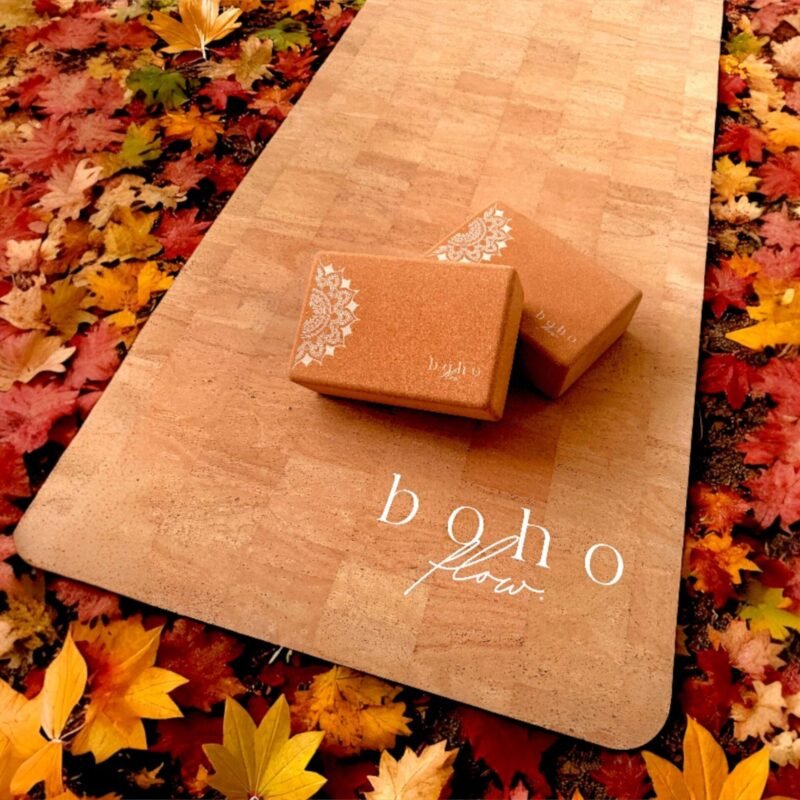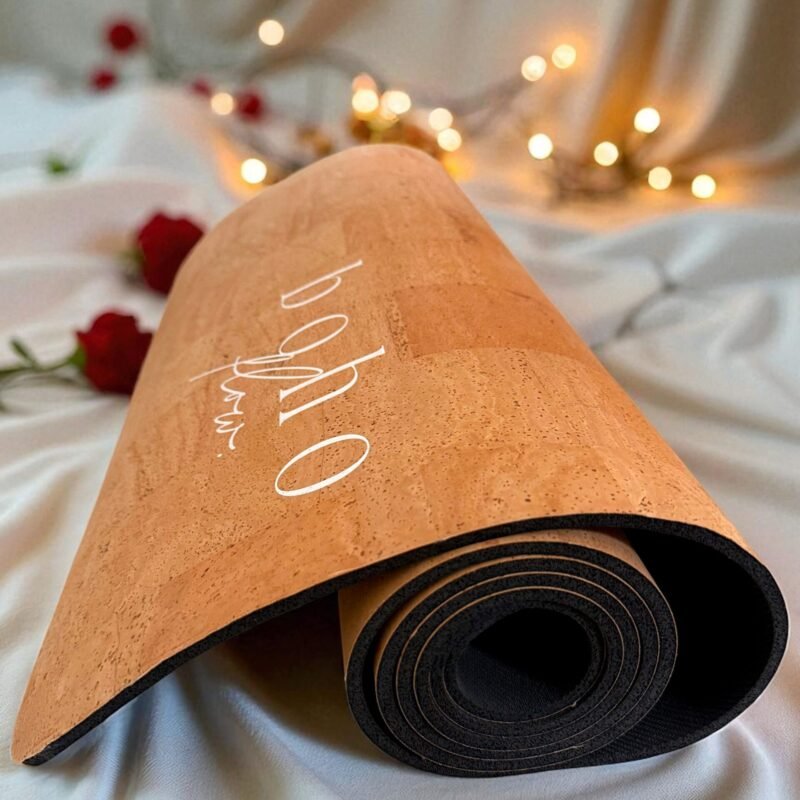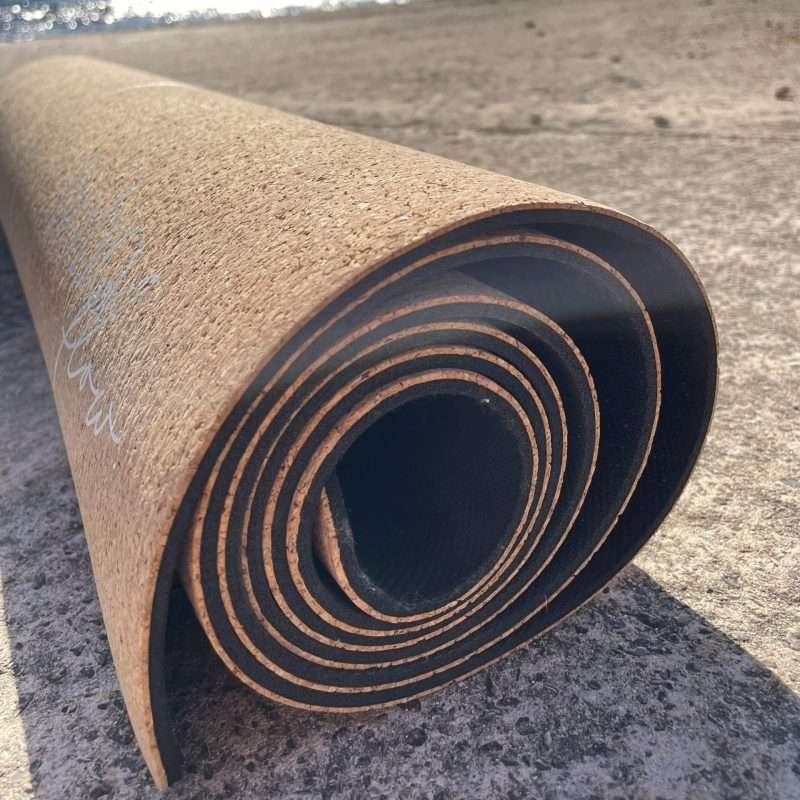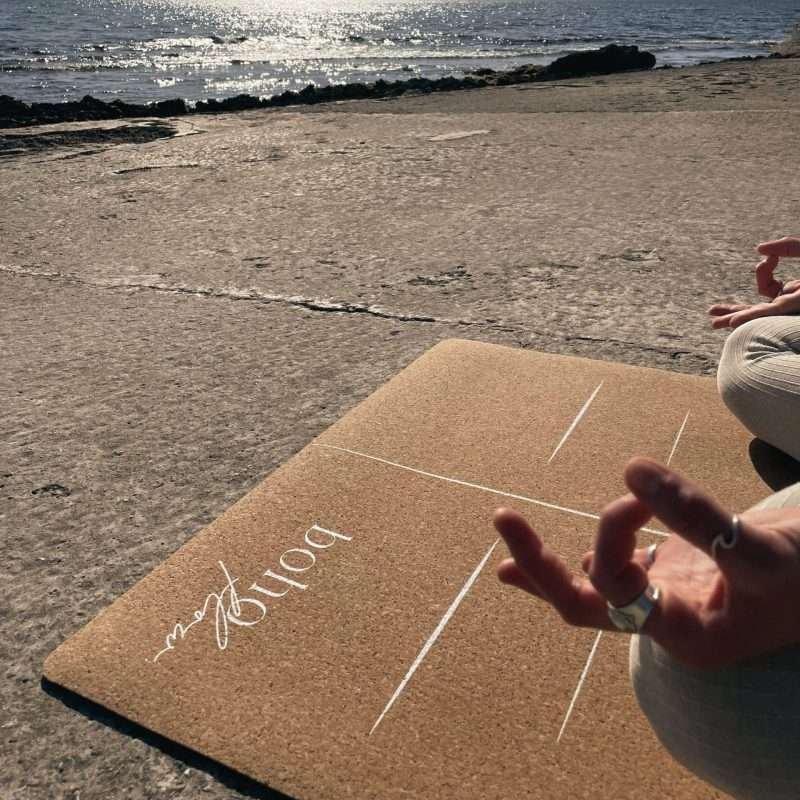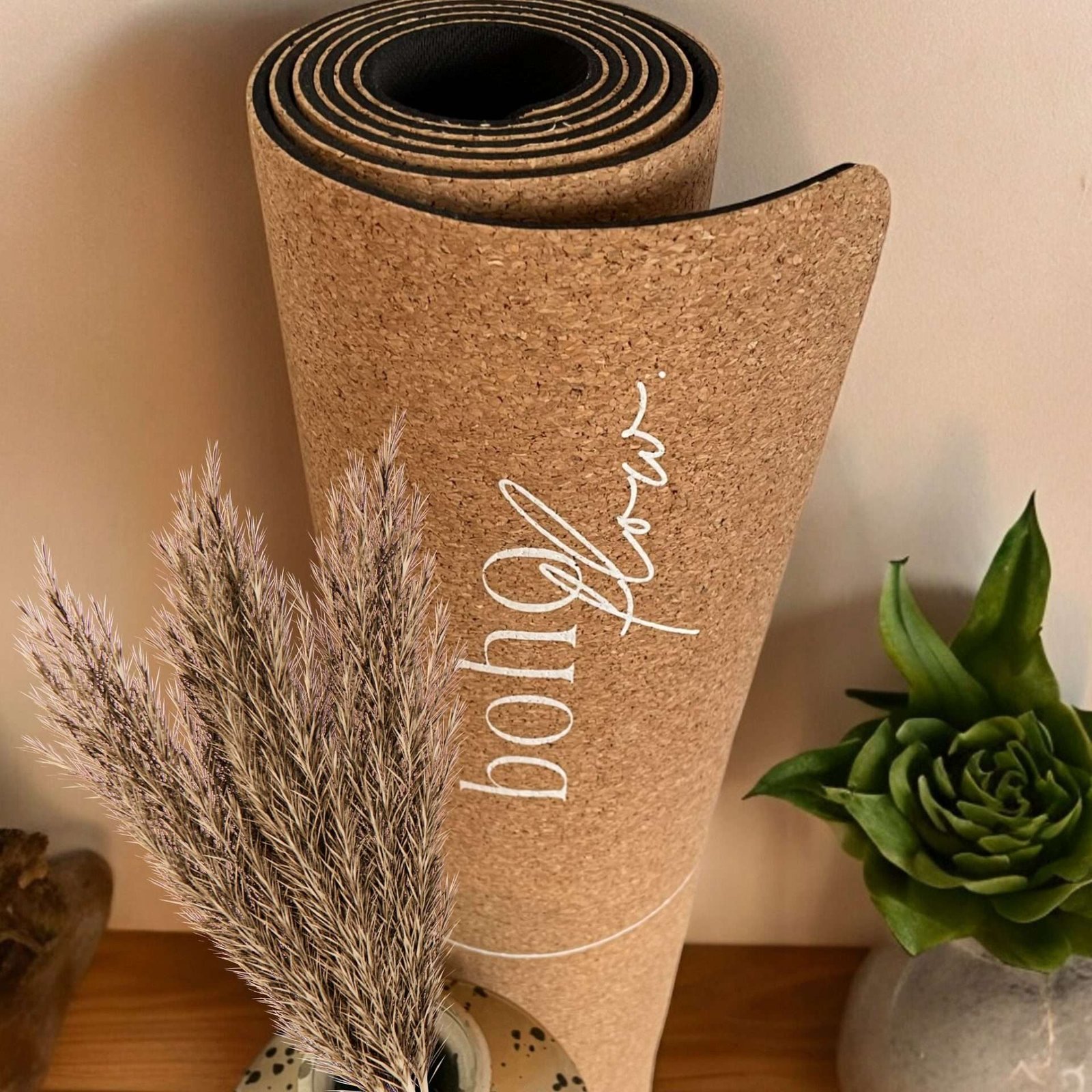Yoga is not just an exercise; it’s a lifestyle that promotes physical, mental, and spiritual well-being. Whether you’re a seasoned yogi or a beginner, choosing the right yoga mat is essential for a comfortable and effective practice.
With a myriad of options available, it can be overwhelming to make the right choice. In this article, we’ll explore the different types of yoga mats, their benefits, and disadvantages. We’ll also delve into why yoga practitioners should consider investing in a natural, eco-friendly yoga mat.

5 Different Types of Yoga Mats
Yoga mats come in a number of different materials – aside from their sizing and thickness. The type of material your yoga mat is made from will have a direct effect on your practice in terms of pricing, comfort, design, ethics, and more. Below is a list of the five most common types of yoga mats, their composition, as well as their respective advantages and disadvantages.
1. PVC Yoga Mats (Polyvinyl Chloride):
- Composition: PVC yoga mats are made of synthetic materials, specifically polyvinyl chloride. They often include plasticizers, stabilizers, and other chemicals to make them flexible and durable.
- Benefits: PVC mats are known for their availability and affordability. They are often easy to maintain and light in weight.
- Disadvantages: One significant drawback is their environmental impact. The production and disposal of PVC mats can release harmful chemicals into the environment, making them less eco-friendly. They may also emit a strong chemical odor initially, which can be unpleasant. PVC mats can contain toxins that may affect your health. Depending on the quality of PVC mats, they can become very slippery when your palms are sweaty.
- Pricing: PVC mats are the cheapest on the market. You can get them for as little as $10 or $20. Higher end PVC mats may be pricier, but I would not recommend investing more than $40 for a PVC mat.
2. TPE Yoga Mats (Thermoplastic Elastomers):
- Composition: TPE mats are made from a blend of thermoplastic materials, usually a combination of plastic and rubber compounds. These materials are chosen for their non-toxic properties and hypoallergenic benefits.
- Benefits: TPE mats are lightweight, fairly durable, and often hypoallergenic because they are latex free. They provide good cushioning and are considered a more environmentally friendly alternative to PVC mats.
- Disadvantages: TPE mats may not be as durable as some other materials, and the quality can vary depending on the production. TPE mats might also have a slight odor initially, and are not as grippy as other materials. Due to their lighter weight and composition, TPE mats usually do not lay flat and tend to bunch up after being rolled up. Please note: TPE mats can be recycled but do contain plastics.
- Pricing: TPE mats can be purchased for relatively cheap although they are more expensive than PVC mats. Mat prices usually range anywhere between $20 to $80. I would not recommend investing more than $50 for a TPE mat.
3. Natural Rubber Yoga Mats:
- Composition: Natural rubber yoga mats are primarily made from latex harvested from rubber trees. They may contain additional materials like cork or jute for texture and reinforcement.
- Benefits: These mats are known for their excellent grip, cushioning (depending on thickness), and durability. They are also eco-friendly, sustainable and biodegradable, making them a very sustainable choice.
- Disadvantages: Natural rubber mats can be heavier than some other options, and they may have a rubbery smell when new. Some people with latex allergies may need to be cautious when using them. However, due to their weight, natural rubber mats to lay flat and securely in place.
- Pricing: The price for natural rubber mats varies with size and thickness of the mat. Mat prices usually range between $40 to $100 or more.
4. Cork Yoga Mats:
- Composition: Cork yoga mats have a top layer made from natural cork, which is harvested from cork oak trees. The bottom layer may consist of TPE or natural rubber, each composed as mentioned above.
- Benefits: Cork mats offer a unique, non-slip surface with antimicrobial properties. They are eco-friendly and biodegradable. Depending on the bottom layer, cork mats can be very grippy and cushioned. Their cork surface is easy to maintain and clean.
- Disadvantages: Cork mats can be heavier if they are backed with natural rubber. If backed with TPE, they will be more lightweight but can bunch up. Cork is a very grippy material but this also depends on the quality of the cork surface. Sometimes it ca help to moisten the mat or hands to get extra grip.
- Pricing: Cork yoga mats usually range in the higher price end due to their natural, eco-friendly, and durable materials. Mat prices for good cork mats are usually between $70 to $100 or more.
5. Jute Yoga Mats:
- Composition: Jute yoga mats are primarily composed of natural jute fibers, which are spun into a mat’s surface. Some may have a non-slip backing made from natural rubber or TPE.
- Benefits: Jute mats provide good grip and durability. They are biodegradable and eco-friendly.
- Disadvantages: Jute mats can be rough on the skin due to their natural texture and may have less cushioning compared to rubber or PVC mats. Due to their biodegradability, they cannot be left out in the sun for too long. If the top of bottom surface of a jute mat gets dirty, it may become slippery.
- Pricing: Jute mats usually fall somewhere between TPE and cork mats in the pricing. Mat prices can range between $40 to $80 or more.
At Boho Flow we innovate design and functionality to make you an eco-conscious trendsetter! We offer 100% natural and eco-friendly yoga products, made with high quality materials, designed with attention to detail and tested by yoga teachers.
Shop our cork yoga mat with Macramé bag here.
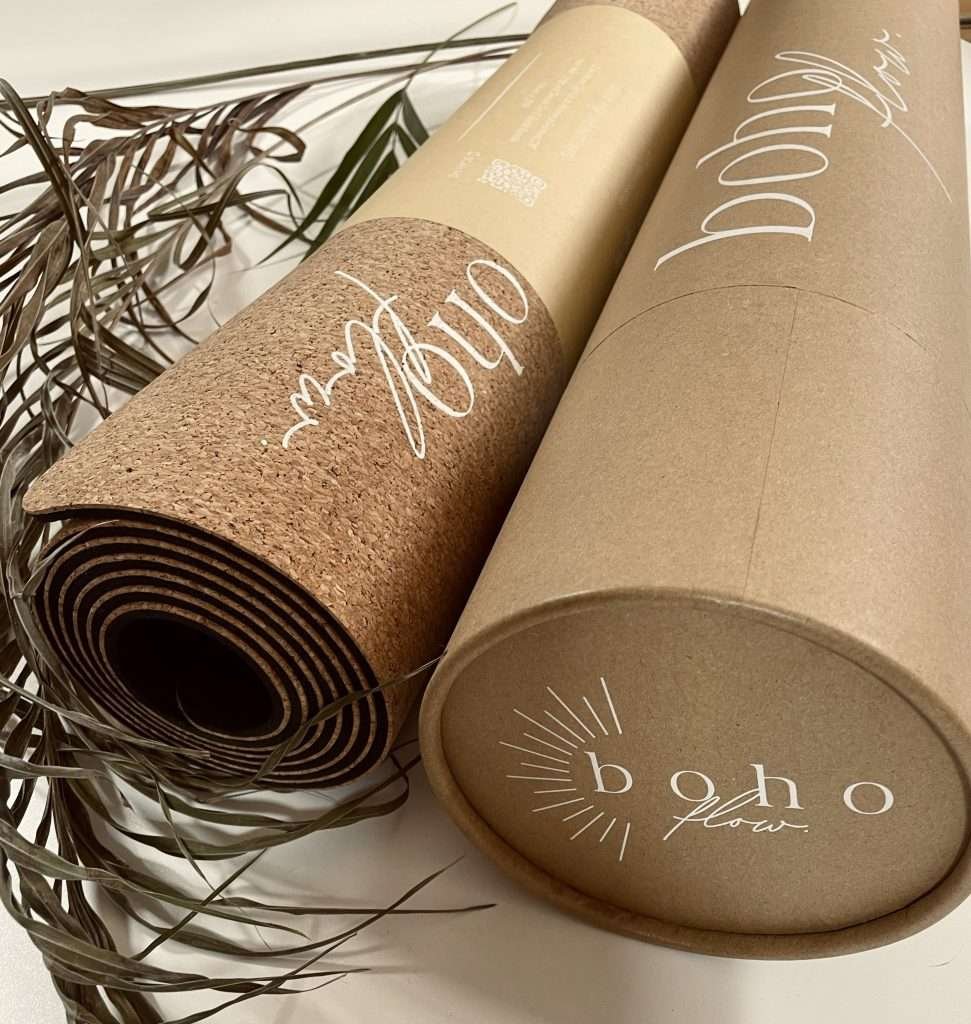
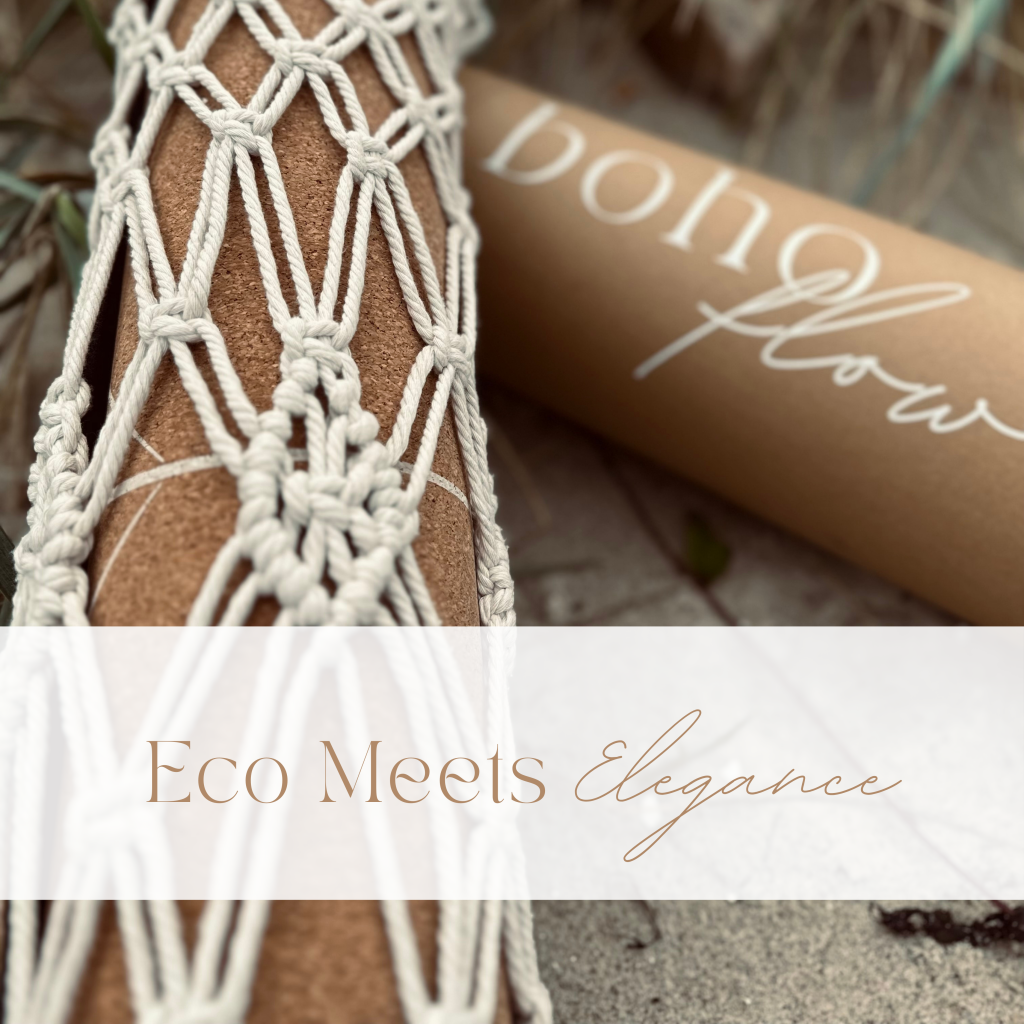
Why Consider a Natural, Eco-Friendly Yoga Mat?
There are a number of important reasons that you may want to switch to or choose a natural and eco-friendly yoga mat. These decisions not only affect your practice and your health, but also the health of our planet.
1. Environmental Impact:
Natural, eco-friendly yoga mats are made from sustainable materials that have a minimal impact on the environment. Choosing one means you’re contributing to a greener planet. These mats are often bio-degradable, ensuring they won’t end up in landfills for centuries. The materials used to make natural rubber, jute, or cork mats are also sustainable – meaning, they will replenish naturally without draining Earth’s resources.
2. Health and Well-being:
Yoga is all about holistic well-being, and using a natural yoga mat aligns with this philosophy. Many conventional yoga mats contain harmful chemicals and synthetic materials that may not be healthy for you or the planet. Natural mats, on the other hand, are free from toxins, making them a healthier choice for your practice.
3. Living yoga off the mat
Yoga is a practice that involves connecting with your inner self and the world around you. Using a natural, eco-friendly yoga mat enhances this connection. By choosing eco-friendly, sustainable, and bio-degradable yoga mats, you practice the Yogic Principles of Ahimsa – non-harm – and Aparigraha – non-greediness. Eco-friendly yoga mats are a perfect example of how we can take our yoga practice off the mat, also.
4. Sustainability and Longevity:
Natural, eco-friendly yoga mats are often designed with durability in mind. They can withstand the wear and tear of regular use, which means you won’t need to replace them as frequently as synthetic alternatives. This not only saves you money in the long run but also reduces the overall production and disposal of yoga mats, contributing to a more sustainable future.
5. Enhanced Performance:
Natural materials like rubber and cork often provide superior grip, especially when you sweat during your practice. This enhanced grip can help prevent slips and injuries, allowing you to focus more on your poses and less on maintaining your balance. A non-slip yoga mat is invaluable. With an eco-friendly yoga mat, you can confidently explore advanced postures and deepen your practice.
Ready to make all of these reasons your reality and invest in an eco-friendly, durable yoga mat?
Final Thoughts on Eco-Friendly Yoga Mats
Choosing the perfect yoga mat is a crucial decision for any yoga practitioner. The type of mat you select can significantly impact your practice’s comfort and effectiveness. While there are various options available, considering a natural, eco-friendly yoga mat offers numerous advantages, including reduced environmental impact, improved health, and a deeper connection to your practice.
By making an eco-conscious choice, you not only enhance your yoga journey but also contribute positively to the planet. So, when you roll out your mat for your next practice, let it be one that aligns with your yoga philosophy and values.


